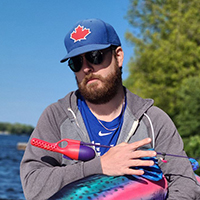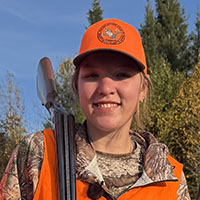Seeing a fresh scrape is near the top of the list of things that excite me every November, generating visions of that mystery buck. Fortunately, deer and moose leave behind plenty of signs that the rut is drawing near, or that it has arrived. Recognizing and understanding these key signs can help you narrow your focus to productive areas for both these animals. Moose Fights: You may encounter areas that look like a moose war zone, trampled with tracks and tufts of moose hair everywhere. This is evidence two bulls went head-to-head. Interestingly, this can even be seen in the snow in December, when those last few unbred cows go back into estrous and start calling, prompting bulls to do their thing. Thrashing: Thrashing is the result of a hormone-fueled bull tangling his antlers up in a tree and tearing. Moose thrash early in the fall, to help shed velvet from their antlers. Later, they will thrash brush as a show of force or as an intimidation tactic, responding to a call or a challenge from another bull. Evidence of thrashing is common along trails that humans and moose travel. Look for tree branches broken and hanging, usually at five to seven feet. Large shrubs will also have stems snapped, twisted, and mangled. Poplars and other tall, skinny trees are often broken by heavy snow, so it’s wise to identity and be aware of the difference. If you find thrashing all along a road, odds are good that one or more bulls have been working the area, making it worthy of further attention. Rut pits: Rut pits, which serve as a marking post for other moose, are another key sign of the rut. In these areas of exposed dirt and mud, the ground will be torn up, trampled, and covered in tracks. Moose urinate and wallow here, giving the pits a fairly strong odour. These are a great sign of rutting bull activity. Winter rubs: Adrian Hagar, owner of D&R Sports in Thunder Bay, shared this photo taken while hunting in mid-December. It shows what looks like oversized deer rubs on large trees, with bark significantly and recently rubbed off. The theory is that moose create these rubs when trying to knock antlers off as winter approaches. Deer Scrapes: Ground scrapes result from deer pawing, tearing up vegetation, exposing bare earth, and urinating on it. Deer will leave scent to
Please log into your OFAH Community account to access this content. Not an OFAH member or Ontario OUT of DOORS Subscriber? Follow the links below to join or subscribe and gain access to exclusive online content.





Contact Information
PO Box 2800 / 4601 Guthrie Dr.
Peterborough, Ontario Canada K9J 8L5
Phone: 705-748-OFAH (6324)
Fax: 705-748-9577
Join Our Newsletter
Watch
Shop
Follow